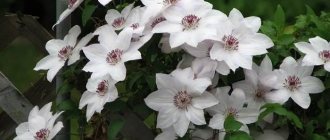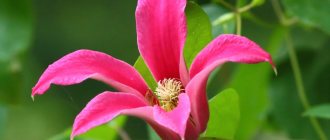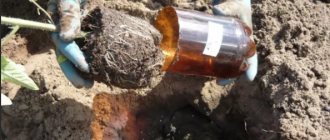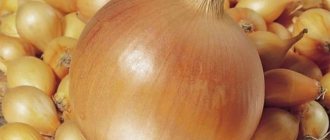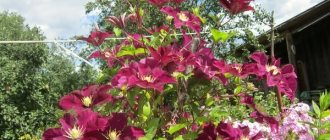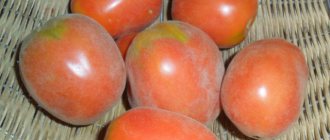Description of clematis Arabella
The Arabella variety is a vine that is unable to cling to support on its own. When forming, flower bushes must be tied up. On average, the shoots reach a height of 2-2.5 m. Without fastening, clematis Arabella covers the soil, combining with other ornamental plants. The advantage of the Arabella variety is that the vine occupies a large area, not allowing weeds to develop. With this method of growing, the shoots grow up to 3 m. What clematis Arabella looks like can be seen in the photo.
The leaves of clematis of this variety are leathery, dark green, whole. Slightly pubescent.
Arabella's flowers are large, up to 9 cm in diameter, containing up to 5 - 8 petals. The color of the flowers varies from soft purple to light blue. The petals are elongated, ovoid in shape. The middle of the flower is white due to the presence of many stamens. The combination of white and blue colors makes the flower stand out against the background of bright green leaves. Arabella flowers develop on shoots that grow within one season.
Whole-leaved clematis Arabella blooms for a long time. Sometimes the first flowers appear on the shoots already in mid-June. Flowering continues until the second ten days of October.
The Arabella variety tolerates low temperatures well. Under shelter, clematis winters safely even at -30˚C.
Clematis Arabella pruning group
The Arabella variety belongs to the third pruning group. This means that after abundant flowering, all vines are cut off almost at the root. Pruning is done in the fall, when preparing the vines for winter. Only stumps up to 20 cm high are left.
Attention! After pruning, the remaining parts of the shoots should have at least 2 or 3 buds.
Disease resistance
The Arabella variety is quite resistant to pest invasion. Diseases also may not bother clematis with proper care, which makes it attractive for growing in any region. A healthy plant has good immunity. Periodic inspection of clematis and timely measures taken will allow you to enjoy the beauty of the plant for a long time.
Description
Clematis Arabella was developed in the UK in the early 1990s by breeder B. Fratwell. It received its name from the daughter of the lords Hershel, the wife of Lieutenant General J. Kizheli.
Attention! There is another variety of clematis called Arabella. But it was obtained back in the 19th century, had white flowers and is currently considered almost lost for gardening.
The clematis variety Arabella, which is discussed in this article, is unusual if only because it does not have the ability to climb, like most common clematis varieties. It is usually classified as a member of the clematis group Integrifolia, the name of which is translated from Latin as whole-leaved. Indeed, the leaves of Arabella are not dissected, like most clematis, and are covered with slight pubescence, which suggests that among the parents of this variety there were representatives of the Lanuginosa group (woolly clematis).
Bushes of this clematis variety are capable of forming a fairly regular raised hemisphere of densely overgrown raised shoots. But at the same time, they completely lack the ability to cling to anything, so when grown on supports they must be constantly tied to them (like climbing roses). Due to this feature, clematis Arabella is often allowed to grow as a ground cover plant.
On average, the length of the shoots of this clematis reaches 1.5 -2 meters. But if it grows, covering the soil with its stems, then by attaching the shoots to the ground, you can ensure that they can grow up to three meters in length.
Clematis Arabella blooms on the current year's shoots, so it is customary to classify it as the third pruning group. Its flowers are unique in that at the beginning of blooming they are characterized by a deep, rich blue-purple color. As it blooms, the color fades and becomes bluish with a slight purple tint. The petals are elongated, separated from each other, there can be from 4 to 8 pieces. The anthers with stamens are creamy in color and may turn yellow when opened.
Comment! The flowers are relatively small in size - from 7.5 to 9 cm and when opening they look up and to the sides.
Flowering begins quite early - depending on the growing region, it can be observed as early as June. Like most representatives of the Integrifolia group, clematis Arabella blooms for a very long time, until September - October inclusive, as weather conditions allow. After heavy rains, the bush may fall apart and the plant may not look very presentable for some time, but soon new shoots with buds appear from the buds and flowering will soon continue.
Application in landscape design
The abundant and long flowering of clematis variety Arabella allows it to be used in garden design.
- Clematis botanical Arabella looks great as a ground cover. Flowerbeds and ridges can be filled exclusively with clematis. In another embodiment, it is used to trim rose bushes.
- When designing a summer cottage for clematis Arabella, the entire length of the shoots is used, growing the plant on a support. It is only necessary to tie the plant up from time to time. Mounting supports are made of different materials. They can be natural or specially purchased from flower shops.
- Flowers also go well with perennials that have a short flowering period. Clematis shoots penetrate the perennial bush, filling it with an abundance of flowers.
- Clematis Arabella looks good next to coniferous shrubs.
- Also, this variety is often used to decorate balconies, gazebos or attics, using it as an hanging plant.
On a note! Clematis Arabella and climbing roses get along well together. This method of growing is a decoration for any area.
Methods for propagating clematis
This variety can only be propagated by the vegetative method, since propagation by seeds will bring completely the wrong result.
Arabella cuttings take root extremely slowly and difficultly.
The ideal method for this species is propagation by layering. Due to the fact that the stems of clematis Arabella already cover the soil, attaching them to it will not pose any difficulties.
You can also resort to dividing the bush, but it will not allow you to immediately obtain a large amount of material for planting.
Reproduction methods
The vegetative method is best suited for propagation of the Arabella variety. It presents several technologies to choose from.
- Dividing the bush. The technology is simple, but does not make it possible to obtain many new plants. It must be taken into account that dividing clematis of this variety at the age of 3 or more years is difficult. Shoots and rhizomes break. You can start propagating clematis in August, but the separated parts of the bush must have time to take root before the cold weather. This process occurs slowly. It is still better to divide the Arabella bush in the spring. It is carefully dug out and the rhizome is divided into several parts with a sharp knife. Each division should have healthy roots and developing shoots. The sections are dried by sprinkling charcoal and planted in a new place. In the first couple of years, a disturbed bush may not produce the usual, abundant flowering.
- Reproduction by layering. A very simple and effective technology allows you to get several new young Arabella bushes at once. To do this, make a shallow furrow up to a meter long in the soil. Fertile soil is poured into it, a clematis shoot is laid, pinned in a convenient way, and covered with soil. Only the tip of the shoot is left on the surface. During the summer it is necessary to water the cuttings. The next year, the sprouted shoots of Arabella are separated from the main bush and planted in a new place. Young plants need to be properly cared for.
- The technology of pinning shoots in a separate container is used. In the area of the node, the shoot is pinned to the ground in colored pots or small plastic containers and covered with soil. During the summer, the shoots are watered and soil is added. In this case, transplanting the plant to a new location will be simple and painless. Already in the fall, the young plant is ready to be planted in a permanent place.
- Gardeners often use cuttings to propagate varieties. But Arabella’s cuttings do not take root well. The technology is less efficient.
Purchase of seedlings and planting
The choice of clematis seedlings should be approached with all seriousness. We can say that the health of the entire garden depends on correctly purchased planting material. Viruses from a diseased plant will not only cause a lot of trouble, but can also spread to other crops. So meticulous and close examination of each pistil is the key to successful gardening. It is clear that crops should only be purchased from trusted sellers, especially when it comes to online stores.
When purchasing, you should focus on the following points:
- The clematis rhizome and root part must be free of mechanical damage
- roots without thickening, not torn, elastic
- clematis must have at least 3 roots of 12 cm each
- The presence of black spots is unacceptable
- an autumn plant is suitable if vegetative buds are visible, and a spring plant with the presence of at least 1 shoot
The place allocated for planting clematis must meet several criteria:
- wind protection
- bright or diffuse light
The optimal size for a planting hole is 60X60X60. Clematis prefers loamy soils, but if you correct another type of soil by adding the necessary elements, it will feel good in clay. The main condition for the clay layer is the creation of good drainage (the height of the drainage layer is approximately 10-15 cm):
- 1st layer – coarse crushed stone
- 2nd layer – fine crushed stone
- 3rd layer – ASG (sand and gravel mixture)
A good purchase for fertilizing all green stuff and clematis, including goat manure. This species combines a symbiosis of valuable fertilizer and compost. Because goat manure is sold as deep animal bedding. Over a long winter in a warm barn, such litter will rot well, and by spring it can be safely applied under flowers and trees.
Even if there is fertile soil on the site, you should tone the clematis and provide the plant with good organic nutrition for the future. Mix the finished compost and manure in equal parts with soil and place the mixture in the hole. Clematis would also benefit from additional protection in the form of an aqueous solution of a protective agent that needs to be poured onto the ground. It is better to replace the usual potassium permanganate with modern preparations that will not only help disinfect the soil, but also add elements necessary to protect the plant to the humus. Preparations for the arrival of the seedling should be carried out several days earlier than the planned planting. The necessary microbiological climate is formed in the ground, which will help clematis to better take root in a new place.
If the day scheduled for planting does not have a good forecast, then it is worth rescheduling this activity and planting the flower under conditions of a dry and clear day.
The root collar and trunk should be deepened by about 5-8 cm. Both during and after planting, the soil must be carefully compacted to avoid the appearance of “air pockets”. After the clematis is planted, it is worth marking a circle around the trunk with a diameter of about 80 cm and laying a layer of expanded clay, coarse sand (gravel), sawdust or bark.
Note: The bark or sawdust must come from deciduous trees. If it is pine sawdust, then before using it as mulch or fertilizer, you need to keep the material for 3 years in a dry place. This procedure is necessary, since caustic resins penetrate into the ground from fresh sawdust, thereby harming the plant and killing earthworms.
Planting Clematis Arabella
Gardeners consider Clematis Arabella to be a finicky plant to grow. However, it is not. If you follow the recommended planting and care rules, the Arabella variety will not require a lot of time and effort. And in gratitude, he will give incomparable beauty for a long period.
First of all, you need to choose the right material for planting. It is better to purchase seedlings in a special flower shop. Specialists prepare planting material taking into account all the characteristics of the variety.
Clematis are sold with open and closed root systems. Before purchasing, you should carefully inspect the seedlings. With a closed root system, there should be 2-3 dormant living buds. With an open root system, the clematis seedling must have living roots. It’s good if there are up to 5 of them. Living buds on the cut shoots should also be present.
Attention! You should not purchase seedlings that have light, thin shoots. In this form they will hurt and take a long time to take root.
When to plant
Clematis seedlings of this variety are planted mainly in autumn and spring. To decide on planting, climatic conditions should be taken into account. If the climate is mild, Arabella can be planted in the fall. If autumn does not indulge in warmth, it is better to postpone the planting process to spring. In this case, the flowers will have much more time to take root and grow stronger.
Where to plant
A well-lit area is suitable for clematis Arabella. But partial shade or diffuse sunlight will also be good growing conditions. It will be great if the area is protected from drafts.
The soil can be any kind, drainage is required. Loam is preferable for clematis. The place should be elevated so that excess moisture drains and does not linger in the soil.
Reproduction
"Arabella" refers to clematis that reproduce exclusively vegetatively - any attempt to grow clematis from seed gives a result that is very far from the mother variety.
Cuttings are considered the simplest and most accessible method , however, Arabella's shoots usually take a very long time to grow, so it is best to resort to propagation by layering. The stems often spread along the ground, so it is not difficult to bend them down and pin them to the substrate. After some time, roots appear at the point of contact with the ground - then you can cut off the branch and transplant the seedling to a permanent place.
Another available way to propagate clematis is by dividing the bush , but in this case you will not be able to get a lot of planting material at once.
Experienced gardeners often use grafting, but this method is too complicated for beginners.
Aftercare
Caring for clematis of this variety is easy. There is no need to make any special effort. But some rules must be followed.
Loosening and mulching
After watering and rain, it is necessary to carefully, but without fanaticism, loosen the top layer of soil. You should not dig the loosening tool too deep to avoid damaging the clematis roots.
The root system of the Arabella variety does not tolerate cooling and heating, so it is advisable to mulch the soil. Use straw or compost for mulching. The layer thickness should be 5-7 cm. The mulch layer must be updated at least once a month.
Watering
Clematis Arabella variety needs to be watered at least once a week. In hot and dry weather, flowers should be watered more often. During periods of drought, you need to monitor the condition of the soil in the flower garden so that the clematis roots do not dry out.
Top dressing
During the first year of cultivation, Arabella clematis does not require fertilizing. Fertilizing should be done from the second or third year after planting.
Up to 5 feedings are carried out per season. At the beginning of the growing season, clematis is fed with nitrogen fertilizers. During the formation of buds, fertilizers are used that contain a maximum of nutrients, since abundant flowering takes a lot of energy from the plant. Clematis makes up for the lack of microelements from the soil, and the soil in the flower garden quickly becomes scarce.
After flowering has completed, it is necessary to apply fertilizers containing potassium and phosphorus to help the plant prepare well for the winter cold.
Care instructions
By following the care recommendations of experienced gardeners, the end result is a strong and healthy plant that delights with abundant and long-lasting flowering.
Watering frequency
Adult clematis are watered once a week. If the weather is hot outside for a long time and the soil is dry, increase the frequency of irrigation to 2 times every 7 days. Warm, settled water is used to moisturize, and the procedure is carried out in the evening, when the sun has hidden. For one Arabella hybrid bush, about 20 liters of water are used at a time.
See also
The best varieties of clematis of the 3rd pruning group with descriptions and characteristics
Read
How to feed the plant
In the first year after placement in a new location, clematis does not require the introduction of nutritional components; this procedure is started only the next season. They do this using the following algorithm:
- Spring. Nitrogen-containing complexes are used.
- Budding period. Complex mineral compositions are used.
- End of flowering. Complexes containing phosphorus and potassium are added.
Under no circumstances should fresh manure be used to fertilize clematis; it will burn the roots of the plants.
Loosening the soil and removing weeds
If the soil around the clematis bushes is not mulched, weed regularly. Weeds take away nutrition from the crop and contribute to the spread of fungal diseases.
After each irrigation, the soil around the hybrid is carefully loosened to ensure a complete supply of oxygen to the roots.
Trimming
Since the Arabella hybrid belongs to the 3rd group, this means that before sheltering for the winter, all shoots are cut off, leaving no more than 20 cm above the ground level. The sanitary procedure for removing diseased and broken branches is carried out as necessary, throughout the entire growing season.
Disease and pest control
Hybrid Arabella has high immunity and is rarely exposed to diseases and pests. For prevention purposes, in the spring the soil is treated with fungicidal preparations. It is also useful to spray plants with copper-containing preparations throughout the season.
Formation
The liana of this hybrid is not capable of clinging to supports on its own, so gardeners independently guide the shoots and tie them up at their own discretion.
Preparing for winter
After pruning the shoots, the ground around the clematis is treated with a fungicide and sprinkled with a layer of mulch. Cover the top with spruce branches. If the winters in the region where the hybrid grows are harsh, an additional wooden box is placed on top and covered with spunbond, leaving small holes for air circulation.
Diseases and pests
Clematis Arabella is quite disease resistant. This quality of the variety is fully manifested only if all recommended care rules are followed and the plant receives all the nutrients necessary for growth. However, you should not completely neglect its protection against pests.
- Fitosporin is used to prevent diseases.
- In rainy years, using Fundazol to combat gray mold will give good results.
- Treatment with a 1% solution of copper sulfate will save clematis leaves from ascochyta blight.
- If the Arabella clematis variety is infected with powdery mildew, a solution of soda ash will help.
- A solution of 2% Bordeaux mixture gets rid of rust.
On a note! In summer, during periods of abundant flowering, clematis can be treated with growth stimulants. “Epin” and “Zircon” are perfect for this purpose. The preparations protect flowers from stress and spring frosts. The bush grows well and blooms profusely and for a long time.
How to propagate clematis correctly?
Clematis can be propagated by seeds, layering, cuttings, or dividing the bush. Propagation by seeds is used for small-flowered varieties; large-flowered clematis are propagated by dividing the bush, cuttings, and layering.
By dividing the bush, plants younger than 5-6 years old reproduce. The bush is dug up. The roots are shaken off the soil and divided with pruning shears in such a way as to obtain several individual plants. Moreover, each should have enough roots and 1 or more shoots with buds. Before planting, the roots can be treated with a weak solution of potassium permanganate.
Reproduction by layering causes much less damage to the plant. The bush hills up to the lower leaves - 2-3 ovaries should be underground. After 1-2 years, a root system develops in place of the leaves. The sprinkled soil is removed, shoots with new roots are cut off. Another method of propagation by layering: a ditch is dug near the bush and several clematis shoots are placed there. Then the branch is sprinkled with peat, soil and covered with dry leaves. Roots will develop by next fall.
Propagation of clematis by green cuttings is carried out during the period of bud setting. The shoots are pruned and divided into parts. The middle part of the shoot is most suitable for cuttings. Each segment should have 1 knot, and it is better to make the top cut straight, the bottom - oblique. Leaves are cut in half. The cuttings are planted in a nutrient substrate and placed in a warm place. Don't forget to water regularly. Within two months the cuttings take root. They are planted in a greenhouse, preferably with a pot. You can plant shoots in a permanent place after a year. More details about the propagation of clematis and other nuances of care are described in the video.
Reviews of clematis Arabella
Valentina, 40 years old, Kirov I really like the Arabella variety. Doesn't require much care. There are more whimsical plants. I grow it on a trellis. I tie it up periodically. It looks very nice. I separated the cuttings and planted them next to the peony bushes. The peonies bloomed quickly. Clematis entwined a bush of greenery. All summer, the ball with flowers was a delight to the eyes of all the neighbors!
Elena, 48 years old, Voronezh The variety Arabella was recommended for cultivation by a friend. I planted it at the dacha. I don't tie it up. Looks great. Such a green carpet with a lot of flowers. I like it for its unpretentiousness. Weeds do not grow in this area. Little care. I advise everyone to grow this variety.
Reviews
Victoria, 39 years old, Belgorod
I like Clematis Arabella for its versatility and unpretentiousness. At first it grew on my retaining wall enclosing a rocky hill. Then, as it grew, I divided the bush and planted some of it in containers with which I decorated the terrace. It turned out very beautiful. And he spends the winter on my glazed terrace, where I cover him with several layers of lutrasil.
Zhanna, 34 years old, Moscow region
I tried to grow clematis Arabella the traditional way, on a trellis, but I had to tie it up all the time, and I got tired. Then I moved it into the garden, and now it feels great in a mixborder with perennials and annuals as a ground cover. I usually prune it in the fall and cover it in the same way as roses.
Varieties of clematis
White:
Warsaw, Polar Star, Ballerina, Madame Andre, Seagull, Hildine.
Blue:
Ramona, Lavsoniana, Klavdiya Shulzhenko.
Blue:
Turquoise, clematis hybrids Jacquemman, Sea Splash (blue-white with a lilac tint).
Blue with a purple tint:
Souvenir, Talisman, Stone Flower, Riddle, Memory of the Heart.
Purple and lilac:
Forest Opera, Ideal, Fantasia, Victoria.
Reds, crimsons and purples:
Cosmic melody, Alexandrite, Dawn, Nikolai Rubtsov (with a lilac tint).
Pink:
Dawn, Tenderness, Lilac Star.
Two-color:
Hope, Barbara Dibley.
All kinds of color combinations of clematis look impressive, from which you can create delightful compositions. For example, blue with two-tone, purple with cyan, purple with white, pink with white, red with white, blue with cyan.
The earliest, around the third decade of June, the climbing small-flowered varieties of clematis flowers bloom; they also have multi-colored flowers: purple, blue, crimson, pink, etc. They bloom in June and August. At the end of July, throughout August and September, large-flowered clematis continue to bloom abundantly.
Particularly beautiful large-flowered clematis hybrids with white to dark purple flowers with a diameter of 15 - 18 cm. They bloom heavily from late June until frost.
Clematis pruning groups
Nelly Moser
“Sorting” clematis into pruning groups is quite simple and is related to the shoots of which year certain varieties form their flowers. Based on this, there are three methods of pruning clematis and, accordingly, three classification groups.
First group of clematis
This group includes species clematis that bloom in early spring on last year's shoots. Flowers of this group are pruned very little: after flowering, dried stems and flowers are removed, or they can not be pruned at all.
The first group of clematis includes the following varieties:
- large-petaled clematis (c. macropetala),
- Alpine clematis (c. alpine),
- mountain clematis (c. montana),
- Clematis flowery (c. florida),
- hybrids Patens (c. patens)
- Florida hybrids
- Atragene
Second group of clematis
This includes hybrid large-flowered clematis that bloom in spring on last year's shoots. Clematis of this group are pruned twice a year: the first time, after the first flowering, last year's faded shoots are cut out, the second time, before winter, the current year's shoots are pruned. Pruning is done to the first leaf or shortened by about a quarter.
The second group of clematis includes the following hybrid varieties:
- Lanuginosis hybrids (c. lanuginose),
- Patence and Florida.
The third group of clematis
These are species and hybrid large-flowered clematis that bloom in summer on the shoots of the current year. Flowers are cut off completely, leaving 15–20 cm from the ground, keeping 2–3 buds on each shoot. Pruning is done in the spring before the plant begins to grow. Also included in this group are clematis with herbaceous shoots that die off during winter and are removed.
The third group of clematis includes the following species and hybrid varieties:
- Jackman (c. jackmanii),
- Vititsella (c. viticella),
- Integrifolia,
- Herbaceous Rekta.
Tips and recommendations for growing and caring for clematis: planting, fertilizing, pruning, etc., can be found in the article “Clematis - planting and care.”
Landing rules
First you need to select a seedling. First of all, you need to look at its vines and leaves. They must be in good condition and free of any damage or stains. In the spring, the buds should be visible quite clearly. Seedlings can be sold in small pots or directly from open ground. During transportation, it is best to wrap the root system of the latter with a slightly damp cloth.
The selected soil should be quite fertile and loose, and be able to absorb excess moisture. Sandy or loamy soil is most suitable, but acidic soil is best avoided. If everything is done correctly, then such a plant will delight everyone with its unusual appearance for a long time. The preparation of the pit must be done in advance - 14–16 days before. Its width and depth must be at least 60 centimeters. In addition, the bottom must be covered with a drainage layer made of broken bricks, small stones or slate. Then you can lay out a layer of humus. All this must be thoroughly trampled down.
You can add additional fertilizer to the hole, such as some ash, chalk or peat. But in this case, the hole needs to be dug a little earlier - 25–30 days before planting. In addition, you need to install several supports in it, on which clematis vines can later be located. Their length should be up to 2 meters. The distance between young seedlings of this plant should not exceed one and a half meters. This will allow the bush to develop fully.
Clematis can be planted in any season: spring, summer, and autumn. However, the first month of autumn is considered the optimal time. The root system needs to be dried a little and then soaked for 2 hours in plain water. Seedlings must be planted in the prepared hole. Their roots must be well leveled, and the lowest bud must be deepened 7 centimeters into the ground. This will contribute to the appearance of a large number of shoots in the future.
Characteristic
The description of the hybrid clematis variety “Niobe” should begin with the fact that the plant is a climbing vine, the successful growth of which requires support to which it will cling with its tendrils. The height of the crop reaches from 2.5 to 3 meters, so it is not able to grow on its own. The variety is large-flowered. The buds open around the second week of May and close in the third week of June. The second time flowering occurs at the junction of June and July and continues until the end of September. The buds on the bush open twice, as last year’s shoots and those that have just appeared bloom separately.
Opened flowers have a beautiful dark burgundy hue, which becomes closer to ruby over time. Velvet petals shimmer beautifully in the sun. The diameter of the open bud is about 15 centimeters, and the number of sepals varies from six to eight. Both elongated stamens and pistils have a bright yellow rich color. The first two years of life, clematis “Niobe” does not bloom too profusely; a large number of flowers appear only in the third or fourth year.
The plant bears fruit as a small nut filled with seeds. The color of the leaves ranges from light green to dark green. The plates themselves have pointed ends and prominent veins. The fibrous root system goes quite deep into the ground.
Clematis "Niobe" is a frost-resistant variety. Its roots can withstand winter frosts down to -35, which makes it possible to grow the crop in most natural zones of Russia. The plant calmly tolerates lack of watering, with the exception of hot days accompanied by strong winds. The plant reacts poorly to excess moisture in the soil.

